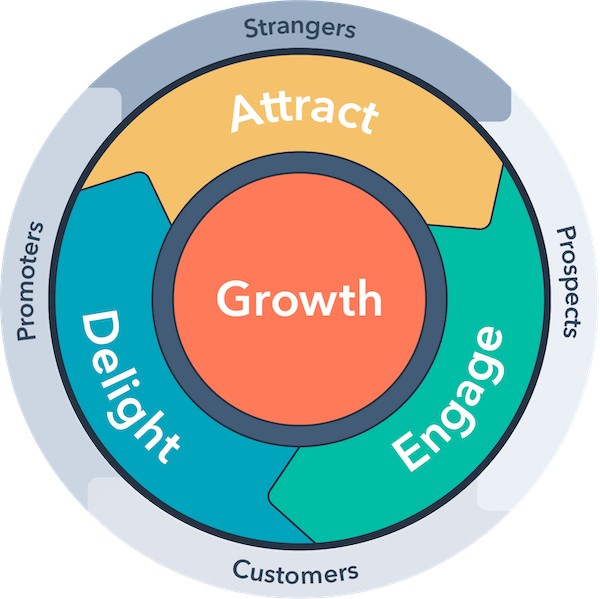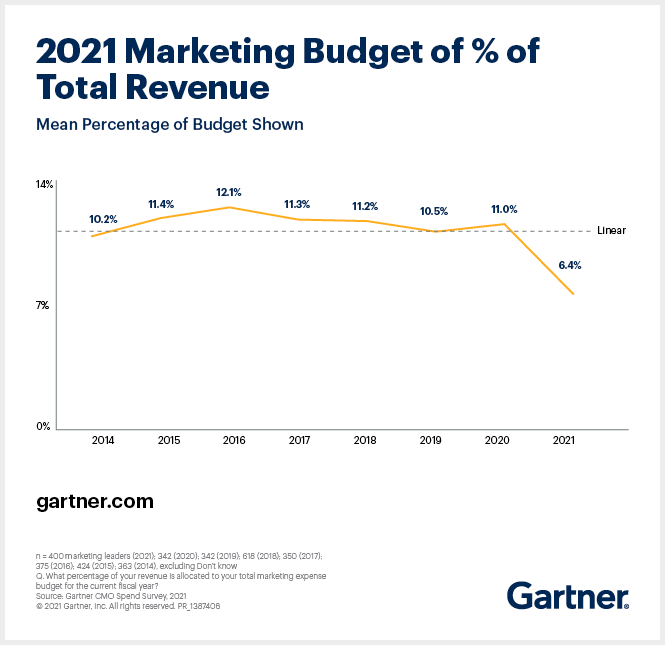Chapter 1
4 minutes
Introduction: Finding your Ideal Customer Profile (ICP)
In business (and in life) you can’t be everything to everyone. Trying to make your product or service do everything is expensive, time-consuming, and doesn’t drive customer lifetime value.
Building a successful flywheel from strangers (people who know nothing or next to nothing about your brand) to promoters (happy customers who help drive new customers) starts with clearly defining your audience. Identifying which prospects and customers will bring the most value to your business enables all go-to-market teams to successfully work together to drive revenue and ensure lasting customer lifetime value.

And, with shrinking budgets and reduced headcount, brands today simply don’t have money to waste on prospects that won’t be a good fit for their business. According to the 2021-2022 Gartner CMO Spend Survey, marketing budgets as a percentage of total revenue dropped from 11.0% in 2020 to 6.4% in 2021, the lowest it’s been in recent history.

To find efficiency, you need to put your dollars and efforts toward the right audience: your ideal customer.
What Is an Ideal Customer Profile (ICP) and Why Is It Important?
As Kevin Tate, CMO at Clearbit, shares, your ICP is “your center of gravity for putting data to work.”
An ideal customer profile is based on company-level firmographic and technographic data points (like employee size, technologies used, industry, and more), and it serves as a representation of the customers and prospects you believe will get the most value out of your product or service. Defining your ICP is the first step on the path to revenue-driven marketing.
For example, your ICP may look something like this:
Example ICP
Type: B2B, SaaS
Employee count: 500 - 1,000 employees
Technology: Uses Salesforce, HubSpot, and Segment
Funding: $10M+ raised
A clearly-defined ICP provides many benefits to your business by:
- Helping you prioritize revenue and customer lifetime value. Without a well-defined ICP, it’s easy to focus solely on lead volume rather than true indicators of success. For example, in a product-led growth motion, you often have tens of thousands of people expressing interest in your free product or free trial. Understanding your ideal customer profile helps go-to-market teams focus on the accounts that are most likely to become paying customers. Having a clear definition of your ideal customer also helps reduce churn and drive customer lifetime value. Targeting and closing the right accounts fuels your flywheel as customers become promoters, and so on.
- Improving efficiency by enabling you to spend your time and money on the places that matter most. Knowing your ICP helps you quickly identify what is working and what isn’t, so you can pivot towards strategies that drive the most revenue.
- Ensuring alignment across teams from marketing to sales to customer success, reducing the need for debate over what makes a prospect qualified. “There are endless hours of debate to be had over what the Q means in MQL and SQL,” says Clearbit CMO Kevin Tate. “But with a shared concept of an ICP, you know the factors that define your ideal customer up and down the chain. Everybody knows that an ICP MQL means: a marketing lead that matches ICP criteria. It gives you a common filter or lens to look at the conversations you’re starting.” And, strong go-to-market alignment helps you deliver a seamless buyer experience.
The teams at Clearbit and HubSpot put together this book to help you scale your business by defining and activating your ICP.
Keep reading to learn how to:
- Develop a robust go-to-market strategy with your ICP at the forefront. We’ll cover total addressable market, serviceable available market, serviceable obtainable market, ICP, and personas, and how they all work together to build a complete go-to-market strategy.
- Reverse-engineer your ICP. Learn how to define your ICP and how Frame.io evolved their ICP to move upmarket.
- Activate your ICP and roll out the red carpet for buyers. We’ll explain how you can use your ICP to deliver a more cohesive buyer experience across ads, your website, and more.
- Identify when to update your ICP. ICPs aren’t static and need to change as your business changes. Learn how and when you should consider updating your ideal customer profile.

